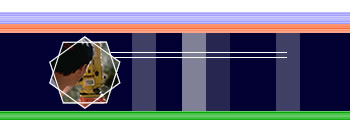With an irregular exterior adjustments parallel to the direction
of the line or made just like a single proportionate problem. Knowing
this, complete the formula using this information."D"
stands for total record departure. "A" stands for record
departure of one course, you should have noted that D1 the departure
of the closing error is to D, the sum of the record departures,
as A1 the adjustment in departure is to A, the record departure
of that course.
But we must use another basic rule, the Compass Rule, when calculating
adjustments perpendicular to the direction of an irregular boundary
line. Knowing this, complete the formula. Here the C's designate
course lengths not departure and C1 is to C the total length of
the courses as L1, the adjustment in latitude is to L, the latitude
of the closing error. The thing to remember with regular boundary
adjustments is that parallel to the line you used single-proportion,
latitudes and departures, but perpendicular to the line you use
the Compass Rule which measure course length rather than cardinal
equivalents.


